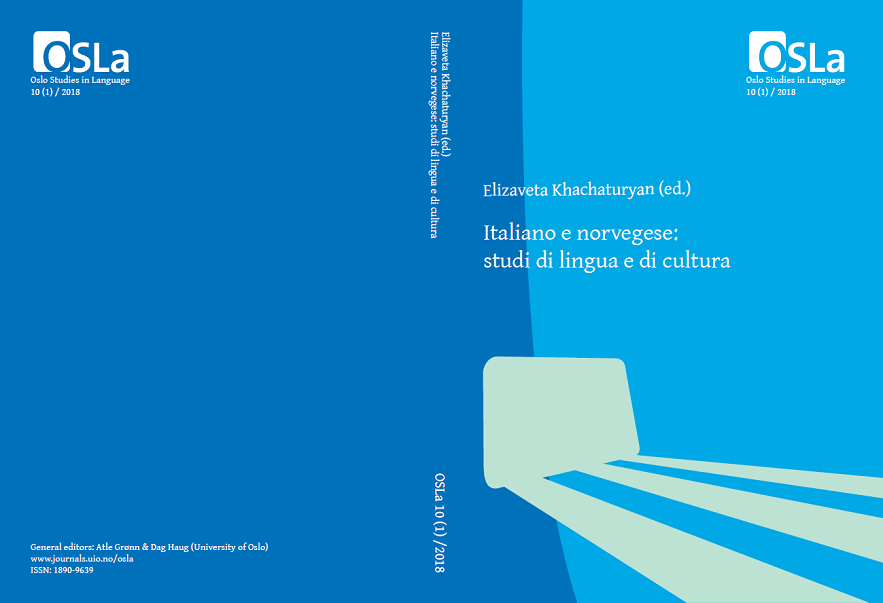Emozioni in norvegese e in italiano: analisi linguistica delle favole di H.C. Andersen
DOI:
https://doi.org/10.5617/osla.6042Abstract
How are emotions are expressed in Italian and in Norwegian? What are the reasons that cause people to consider Italian a more emotive language compared to the Germanic languages? To answer these questions, two translations of Hans Christian Andersen’s fairy tales are analyzed: “The Emperor’s New Clothes” (Il vestito nuovo dell’Imperatore / Keiserens nye klær) and “The Ugly Duckling” (Il brutto anitroccolo / Den stygge andungen). The analysis focuses on interjections and verbs of speech. In the Italian translations, more interjections are used and the verbs of speech are more expressive (in particular, esclamare ‘to exclaim’). In the Norwegian translations, interjections are rare, sometimes different constructions are used instead, and the verbs are often more neutral (in particular, å si ‘to say’).Downloads
Published
2018-02-26
Issue
Section
Artikler



